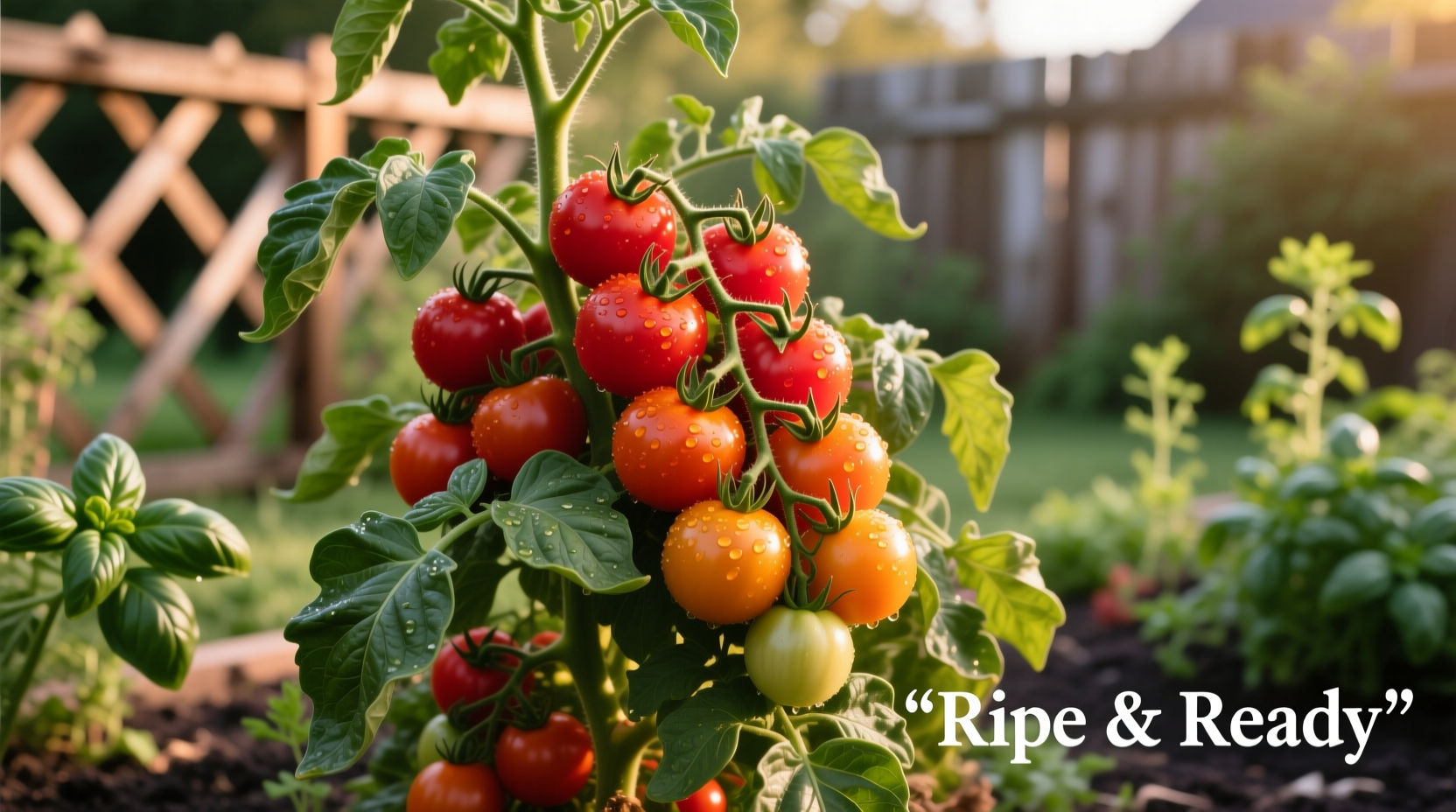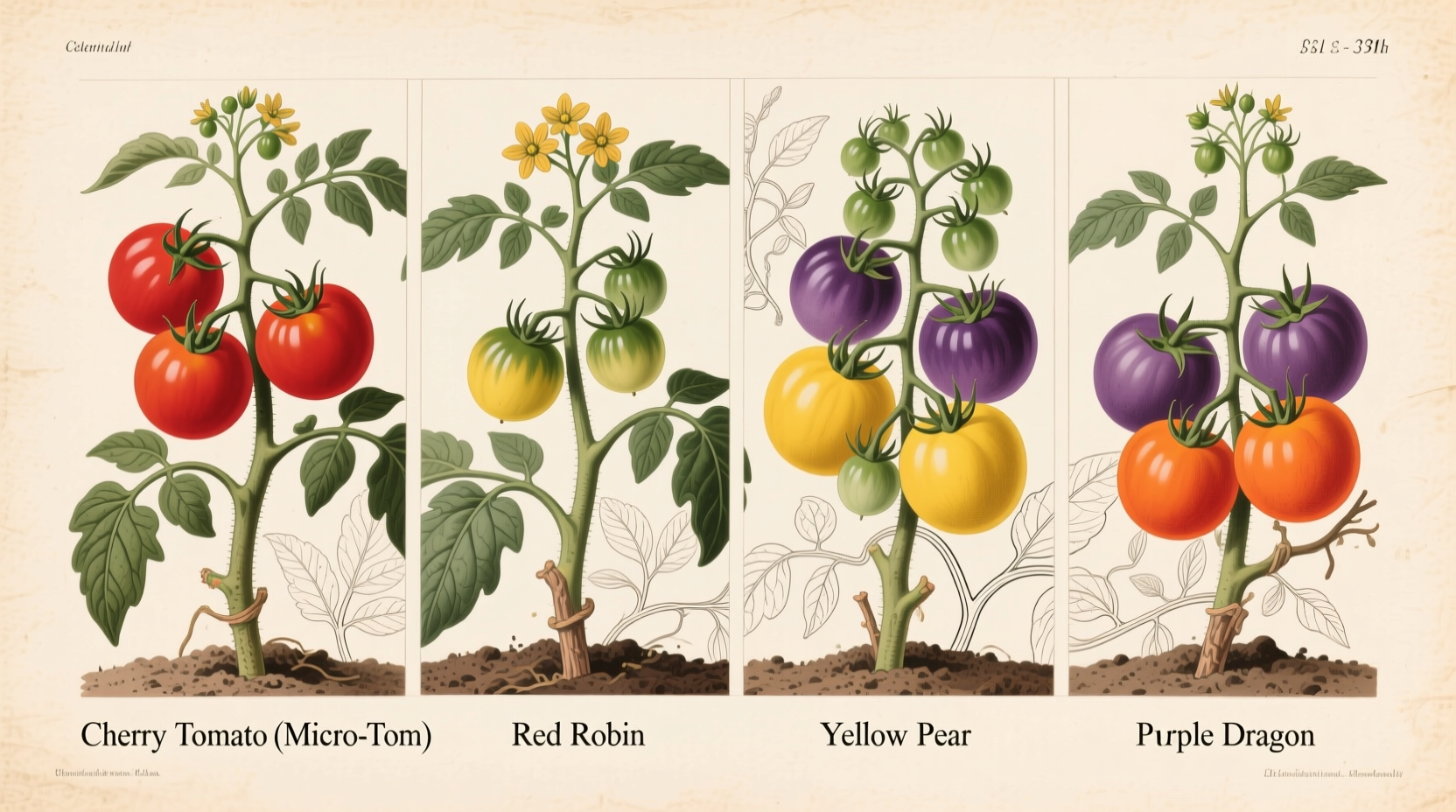Determinate tomato plants, also known as bush tomatoes, are compact varieties that grow to a fixed height (typically 3-4 feet) and produce most of their fruit over a concentrated period. Popular types include Roma, Celebrity, Bush Early Girl, and Marglobe - each offering unique flavor profiles and ideal for specific culinary uses like canning, sauces, or container gardening.
What Makes Determinate Tomatoes Different?
Unlike their indeterminate cousins that grow continuously until frost, determinate varieties follow a precise growth pattern. These bush-type tomatoes reach a genetically predetermined height, set fruit in clusters along their stems, and complete their production cycle within a 4-6 week window. This predictable habit makes them invaluable for gardeners with limited space or those planning harvests for canning.
According to research from the University of California Agriculture and Natural Resources, determinate tomatoes typically allocate 70-80% of their energy to fruit production rather than vine growth, resulting in earlier harvests but smaller overall yields compared to indeterminate types. This biological efficiency explains their popularity among urban gardeners and commercial producers alike.
Top Determinate Tomato Varieties Compared
| Variety | Days to Harvest | Fruit Characteristics | Best Uses | Special Features |
|---|---|---|---|---|
| Roma (Plum) | 70-75 | Oblong, meaty, low moisture | Canning, sauces, paste | Disease resistant, high yield |
| Celebrity | 70-75 | Round, 7-8 oz, deep red | Fresh eating, slicing | VFN disease package, consistent performer |
| Bush Early Girl | 50-54 | Round, 4-8 oz, juicy | Early season fresh eating | One of earliest maturing determinates |
| Marglobe | 72-75 | Round, 8-10 oz, smooth | Slicing, canning | Cold-tolerant, heirloom quality |
| Patio Princess | 65-70 | Cherry, 1 oz, sweet | Containers, snacking | Bred specifically for pots and small spaces |
This comparison reflects data from the University of California's agricultural extension program, which has evaluated tomato varieties across multiple growing seasons. Notice how each variety serves specific gardening needs - from early harvests to container suitability.
When Determinate Tomatoes Shine: Contextual Applications
Understanding where determinate varieties excel helps avoid common gardening mistakes. These compact plants thrive in specific scenarios where their growth habit provides distinct advantages:
- Container gardening: Varieties like Patio Princess and Tiny Tim perform exceptionally in pots 14 inches or larger, making them perfect for balconies and patios
- Canning operations: Roma's concentrated harvest window aligns perfectly with processing schedules, reducing waste
- Short-season climates: Early varieties like Bush Early Girl mature before frost in northern zones
- Commercial production: Uniform ripening allows for efficient mechanical harvesting
However, determinate tomatoes have limitations. They generally produce fewer total fruits per plant and require more plants to achieve continuous harvests compared to indeterminates. The Cornell Cooperative Extension notes that determinate varieties typically yield 10-15 pounds per plant versus 20-30 pounds for indeterminate types in optimal conditions.
Proven Growing Techniques for Maximum Yield
While determinate tomatoes require less maintenance than vining types, proper care significantly impacts your harvest:
Planting Essentials
Space plants 24-36 inches apart in rows 3-4 feet apart. Unlike indeterminates, most determinate varieties don't require extensive staking, though cages improve air circulation and reduce disease. The USDA gardening guidelines recommend planting determinates slightly deeper than their nursery containers to encourage additional root growth along the buried stem.

Nutrition and Watering
Apply balanced fertilizer at planting, then switch to low-nitrogen, high-phosphorus formula when flowers appear. Consistent moisture is critical during fruit set - fluctuations cause blossom end rot. Mulching with straw or compost maintains soil moisture and temperature. Research from the University of Florida shows that determinate varieties respond best to deep, infrequent watering (1-1.5 inches twice weekly) rather than daily light sprinkling.
Common Challenges and Solutions
Determinate tomatoes face similar disease pressures as other types but their compact growth can increase humidity-related issues. Prevent fungal diseases by:
- Watering at soil level rather than overhead
- Pruning lower leaves that touch soil
- Rotating crops annually (avoid planting tomatoes in same spot more than once every 3 years)
Harvesting and Using Your Determinate Tomatoes
One of the greatest advantages of determinate varieties is their synchronized ripening. For best flavor and shelf life:
- Harvest when fruits show full color but remain slightly firm
- Pick daily during peak production to prevent overripening
- Store at room temperature away from direct sunlight
Roma and other paste tomatoes excel in sauces due to their thick flesh and low moisture content. For fresh eating, varieties like Celebrity offer the perfect balance of sweetness and acidity. Container varieties like Patio Princess provide continuous harvests of sweet cherry tomatoes ideal for salads and snacking.
Troubleshooting Common Issues
When growing determinate tomatoes, watch for these frequent problems:
- Blossom drop: Caused by temperature extremes (above 90°F or below 55°F) - use shade cloth in heat waves
- Cracking: Results from uneven watering - maintain consistent soil moisture
- Leaf yellowing: Often indicates nutrient deficiency - apply calcium supplement if blossom end rot appears
Remember that determinate plants won't recover from severe pruning like indeterminates, so handle them gently during maintenance.











 浙公网安备
33010002000092号
浙公网安备
33010002000092号 浙B2-20120091-4
浙B2-20120091-4